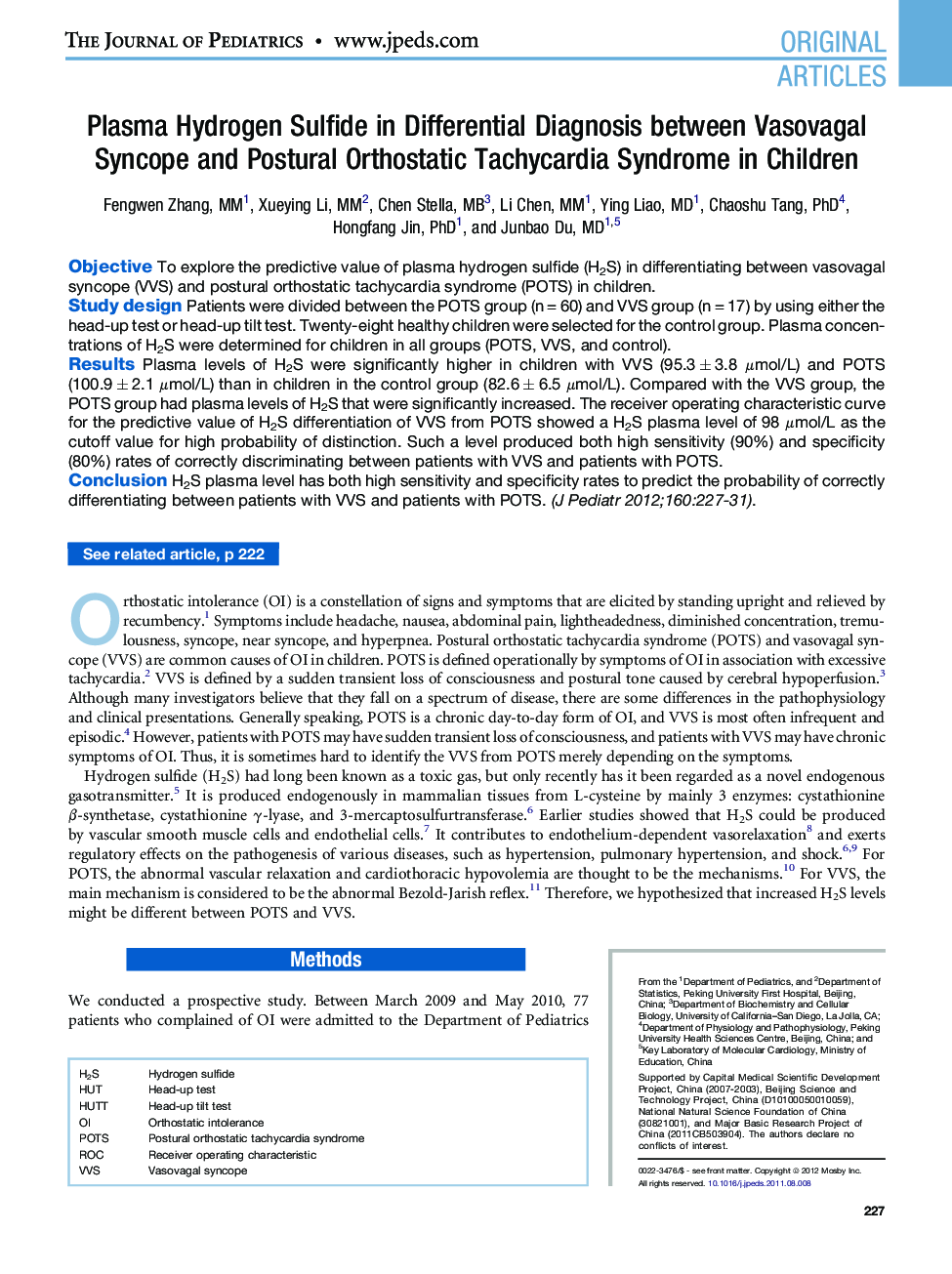| Article ID | Journal | Published Year | Pages | File Type |
|---|---|---|---|---|
| 4165755 | The Journal of Pediatrics | 2012 | 5 Pages |
ObjectiveTo explore the predictive value of plasma hydrogen sulfide (H2S) in differentiating between vasovagal syncope (VVS) and postural orthostatic tachycardia syndrome (POTS) in children.Study designPatients were divided between the POTS group (n = 60) and VVS group (n = 17) by using either the head-up test or head-up tilt test. Twenty-eight healthy children were selected for the control group. Plasma concentrations of H2S were determined for children in all groups (POTS, VVS, and control).ResultsPlasma levels of H2S were significantly higher in children with VVS (95.3 ± 3.8 μmol/L) and POTS (100.9 ± 2.1 μmol/L) than in children in the control group (82.6 ± 6.5 μmol/L). Compared with the VVS group, the POTS group had plasma levels of H2S that were significantly increased. The receiver operating characteristic curve for the predictive value of H2S differentiation of VVS from POTS showed a H2S plasma level of 98 μmol/L as the cutoff value for high probability of distinction. Such a level produced both high sensitivity (90%) and specificity (80%) rates of correctly discriminating between patients with VVS and patients with POTS.ConclusionH2S plasma level has both high sensitivity and specificity rates to predict the probability of correctly differentiating between patients with VVS and patients with POTS.
